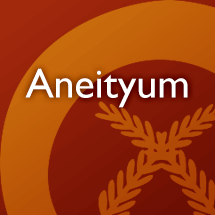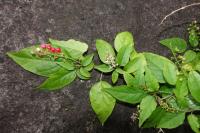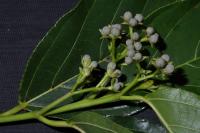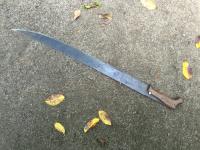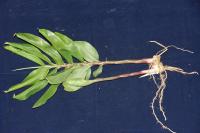An example search has returned 100 entries
acesare
adj. sun just down
bookmarkaelan panadol
ahwai lelcai
v. to plant weeds; to make a wilderness or a waste
bookmarkecetaig jai
v. to come out, as banana fruit
bookmarkehnat aiek
v.n. go before
bookmarkelumai
n. cloth (related to nelmai)
bookmarkepigjai iran
n. last quarter of moon
bookmarketi laulau
adv. soon
bookmarkfetofeto
inceimu
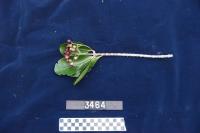
n. tree, 7 m tall (collection: Gregory M. Plunkett #3464)
Example: This is a sacred plant. The wood is used for rafters in house building. To plant taro, take an 8 cm diameter stick, sharpen it and use to make holes for planting. The stick is as long as needed for a person to stand while making the hole.
bookmarkindawoc
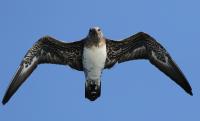
inhetisjopoig
n. kind of breadfruit
bookmarkinhitilga

n. liana climbing up a Syzygium tree into the canopy, growing at edge of dense forest near garden area. (collection: Gregory M. Plunkett #3637)
Example: Rope is made from the inner bark of this plant. Use the rope immediately after it is stripped from the bark, there is no need to treat it with heat as is the case with other plants. Alternatively, the coil of bark rope can be kept in fresh water where it will stay soft until needed. Medicine for women when sick with a headache from the spirit sea snake, or sea god, or sea spirit that makes people sick. Men use it to help with toochaches. Women use it to help with backpain, stomache pain, or any other pain. Must pound two leaves taken from the top of the plant and combine with incespiv. Rosalina Nijae said it was mostly used by men so did not know how to use it well. Walking in bush and become thirsty, cut vine on 1 side and drink. Seeds made into foot bracelets for men for Kastom dances and make all sorts of different sounds. In some places taboo to cut large one as the large ones embody the snake spirit.
bookmarkinhundain
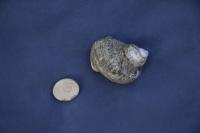
inmoijeuv natpoig
n. a comet
bookmarkinpaije
n. kind of taro
bookmarkinpak
n. species of banyan
bookmarkintak apnyin
n. the following day
bookmarkintakedou

n. Redface Squirrrelfish
Example: Photo by Jeffrey T. Williams / Smithsonian Institution, License: CC BY-SA 3.0 via Fishes of Australia
bookmarkintop̃ asiej

n. herb, 1 m tall (collection: Gregory M. Plunkett #3221)
Example: This plant is used as a wild cabbage. The leaves are used to cover fish when baking in an earth oven and then these leaves are eaten. This is another "calendar plant" of Aneityum. When this plant flowers it means that turtles are very fat, so it is the indication that it’s time to go fishing for turtles. Also a "message plant." If a person wishes to break an agreement then the person puts the top leaves of this plant on another individual’s doorstep to indicate that the agreement is broken.
bookmarkinyipei
n. the flour, as of arrowroot
bookmarkisji ariko
v. to gather beans
bookmarklelceije
v.n. to walk abroad
bookmarkmasoa
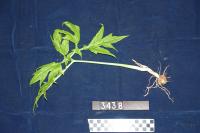
n. sterile herb, juvenile form (collection: Gregory M. Plunkett #3438)
Example: This plant is used as a starchy food. To prepare it, grarte it into a dish, wash with water, the starch settles to the bottom, pour off the water, dry the starch in the sun and make it into a powder. The starch can be cooked with coconut milk and eaten.
bookmarknabuthwä
nadi adiat upni
nadine
n. kind of plant, grass, or fern
bookmarknaero
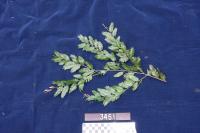
n. sapling directly under large tree of same species (20-25 m tall), growing in primary forest. Sterile. (collection: Gregory M. Plunkett #3451)
Example: 1. Wood used for timber boards. 2. Timber tree, sawn timber young stems for spear fishing, clean bark, heat it, affix tips on the end.
bookmarknafirama
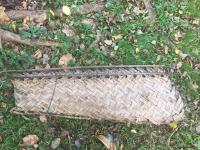
nagdajija
n. kind of breadfruit
bookmarknagedauyag
n. kind of taro
bookmarknaha
n. Crinum asiaticum; variation asiaticum L.
Example: from leaves taken internally as a laxative to treat ciguatera and against asthma
bookmarknaha
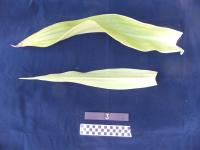
n. lily. Cultivated grows in village. (collection: Ashley A McGuigan #3)
Example: 1. To cure the sea snake (nispev) curse that causes missed periods. First the husband must combine 4 young leaves of incispev and 4 young leaves of nafanu and mash and squeeze the juice into a small bamboo (1-1.5 inch diameter) The nafanu is important because it is a plant that connects to the sea. Use wildcane leaves cover the bamboo closed. Go to the sick person and unwrap the snake from her. Start from the top and let the woman drink a small part of the potion then wash her with the mixture, making sure to wash head, elbows, knees, feet, and belly. Then take a leaf of naha and break it over the woman’s belly button to break the snake off. Smash the bamboo vessel to pieces. Leave the woman there until the wash dries on her. This takes one whole day and the ceremony in the evening so she can sleep and she must not eat. This ritual is performed by men. 2. Wrap leaf around fish to cook it on fire, tie with pandanus or any bush, vine. Also used to bake Cyrtosperma merkusii in same way as AAM 1 because it has thick watery leaves. 3. For a person who has been burned by the fire, cut the leaf and drip the sap on the burn to cool it – stops burning feeling. 4. If your joints – elbow, wrist, knee, ankle – feel so cold that they are painful, then heat the leaf on both sides and lay it on painful area. It will take the cold and pain away.
bookmarknahtaicai
n. plant
bookmarknala
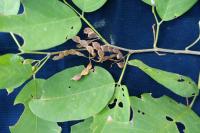
n. tree to 7 m, dbh 20 cm (collection: Michael J. Balick #4860)
Example: This is a common tree. If a person travels from one district to another on Aneityum, and you see the tree planted in that other district, a person knows they are free to come into this area. When the leaves are yellow, as in a young tree, the local name is nala’gay. If a person carries a branch of this tree into a village it is a symbol that the person is coming with peaceful intentions.
bookmarknalak cai
n. kind of plantain
bookmarknanad

nanad

n. shrub. Growing near the beach. (collection: Ashley A McGuigan #4)
Example: 1. Dried branches from this plant can be used to roast vegetable crops that women eat if they have problems becoming pregnant. 2. Firewood, burns well. 3. Some people will eat the green fruit for protection against black magic. Eat 5 fruits for this. Eat it only once – will last for a year.
bookmarknapoijec
n. kind of tree
bookmarknarakiraki
n. a whirlwind
bookmarknarecheno
n. kind of plant, grass, or fern
bookmarknasanhac
n. the poison of the inhac
bookmarknatcai
n. kind of plant, grass, or fern
bookmarknauram aged
n. kind of banana
bookmarknautahos
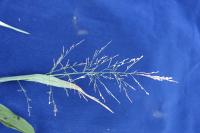
n. herb, 1. 5 m tall (collection: Gregory M. Plunkett #3280)
Example: A "message plant". In ancient times, this plant was used for communicating. If you go to a person who composes songs and give this to them, they will know to compose a song for you. Name means "flowers on the ground".
bookmarknauyerop
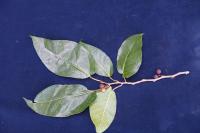
n. tree, 3 m tall (collection: Gregory M. Plunkett #3505)
Example: The young leaves are edible, after boiling for 5 minutes. A piece of coconut and a pinch of salt is wrapped in the leaves and eaten. The mature leaves are used to wrap food such as pig or cow meat and cooked in an earth oven. Tie this bundle with a piece of Pandanus fiber to secure it before putting in the earth oven. Both the green and ripe fruits are edible.
bookmarkneaig
n. the kernel of a coconut; the coconut tree
bookmarkneduon yau
n. kind of banana
bookmarknefelelicai has
n. tares
bookmarknelda
n. kind of plant, grass, or fern
bookmarknemijcopau
n. kind of palm
bookmarknepahas
n. kind of tree
bookmarknepjenepjen
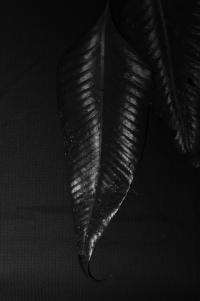
n. epiphytic vine climbing on trees, growing in dense rainforest. (collection: Gregory M. Plunkett #4091)
Example: 1. When a child is between 1 mos. and 1 yr. if the father persists too soon in resuming sexual relations with the mother, the child can become sick. In preparation for the sickness, green leaves are collected. When the sickness occurs, the leaves (now dry) are burned and the baby is washed with the charcoal. 2. After visitors leaves one’s house, one must not hurry to return to their gardens. One waits a few days, then swims with the rachis of this fern tied about their waist. If this practice is not followed, it is believed that the plants in one’s gardens will grow weak.
bookmarknerid u uncat
n. the tow of flax
bookmarknese
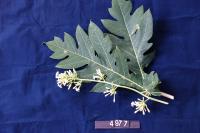
n. herb to 4 m tall, male flowers white (collection: Michael J. Balick #4977)
Example: The fruits are edible and eaten when ripe. To soften beef or octopus, or other meat that is tough, chop green fruit and put in a bowl with meat/fish and then add some water. Allow to sit for 30 minutes or if the food needs to be softer, then leave it in longer. The leaves are used to feed lobsters that are being kept in cages underwater, following their harvest. The leaves are used to cover stones on the earth oven. To treat a person with Ciguatera illness, wash many very gren fruits of papaya, the smallest ones that form at the top, and eat these to help relieve symptoms.
bookmarknese
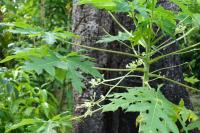
n. shrub to 2 m, flowers white. forest near house. (collection: Michael J. Balick #4871)
Example: A handful of flower buds are collected and put into water with 1-2 pieces of papaya roots. Heat the water and drink it hot for the treatment of hypertension or vein problems, or to promote circulation in overweight people. Do this treatment 1x a month. The white sap is collected and used to soften octopus flesh for eating. Put sap, fruits and chopped leaves in a bowl and add the octopus, allowing it to remain in the bowl for 1 hour--this will soften the flesh of the animal. The sap can be used to wash the skin of tough beef or wild pig--it helps to "burn" off (remove) the skin. When cooking tough meat, take young fruits of this tree and cut them up and put them in the pot with the meat, boil it to soften the meat which can then be cooked.
bookmarkneudan tauoc neaig
n. the center sprout of a coconut tree
bookmarknevehev
n. current of air
bookmarknidwunitei

n. tree fern, trunk 2 m tall (collection: Gregory M. Plunkett #4102)
Example: 1. There are kinds of this plant. This is considered the white one. See GMP #4100, Cyathea sp., which is considered the black one.
bookmarknijhinga
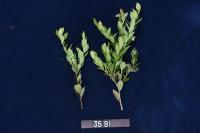
n. shrub, 1-1. 25 m tall (collection: Gregory M. Plunkett #3591)
Example: The fruits of this species are edible when ripe (black) and are very sweet. It grows in the white grass area in the open. It is "numba one" fruit. If a person eats a lot of these it turns their tongue reddish-purple.
bookmarknimtahuged
n. the holes in a coconut
bookmarknisjau
n. kind of tree
bookmarknitato naretou
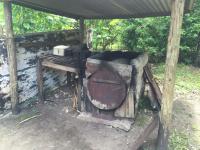
nofowai
n. river
bookmarknohwai itai
n. corn
bookmarknomotmot mese
n. hay
bookmarknucsei
n. kind of taro
bookmarknuhujcei

nälmaha
n. Ficus septica var. cauliflora
bookmarksepagko
adv. down yonder
bookmarkucjicjid
v.a. to heap up earth to taro
bookmarkwamhau
n. kind of taro
bookmark